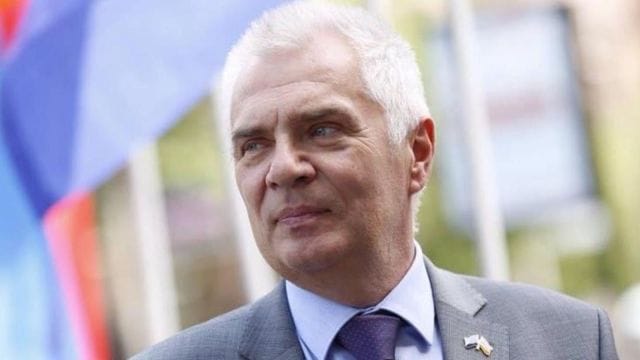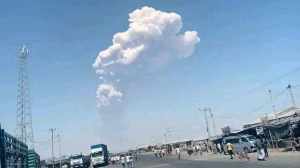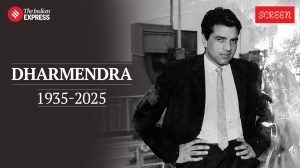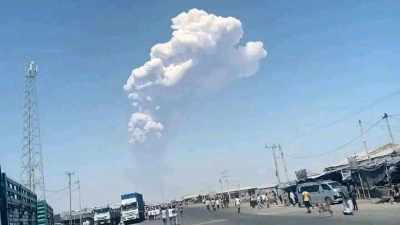‘Delhi holds on to its soul, despite all change — stubbornly, beautifully’: Poland’s Head of Mission in India
For the seasoned diplomat, who can speak Polish, English, Russian, French and German, living in Delhi has been an enriching experience
 Dr Switalski has authored several books (Credit: www.gov.pl)
Dr Switalski has authored several books (Credit: www.gov.pl)A diplomat with nearly 40 years of experience, Dr Piotr Antoni Switalski is currently serving as Poland’s Head of Mission in India. Over his decades-long experience, he has held various top positions in international diplomacy, including the Deputy Foreign Minister of Poland, Permanent Representative of Poland to the Council of Europe, and Ambassador of the European Union to Armenia.
Dr. Świtalski studied at the Faculty of Journalism and Political Science at the University of Warsaw and the Moscow State Institute of International Relations. He holds a PhD in History and is also an author, known for works such as “The Hourglass and the Throne. The Time Factor in International Politics” and “The OSCE in the European Security System: Chances and Limitations.”
For the seasoned diplomat, who can speak Polish, English, Russian, French and German, living in Delhi has been an enriching experience. “It’s a city that challenges you, teaches you, and ultimately welcomes you,” he says.
He speaks to The Indian Express as part of a series of interviews with Ambassadors about Delhi — their home.
Excerpts
What is the one place in the city that you love to visit often?
Delhi has a fascinating energy — it can be chaotic one moment and poetic the next. It has been evolving rapidly over the years, yet centuries-old traditions continue to stand confidently alongside modern innovations. Despite all the change, the city still holds on to its soul and character—stubbornly and beautifully.
One place I love to visit often is Nehru Park. I go there regularly for my morning runs. The lush greenery, the birdsong, and the calm of the park constantly remind me how beautifully Delhi balances nature with urban life.
What are the three things that have stood out during your stay in Delhi?
It is a vibrant city, full of energy, inspiration, and diversity. In fact, it feels like more than one city. There’s the charming old part — the real Delhi; the chaotic, bustling parts bursting with life; the official, monumental areas like India Gate, always filled with people; and the administrative district, with the Presidential Palace and Central Secretariat. And then, of course, there’s Delhi as a garden city, which is truly unique.
Any special memories or encounters related to Delhi that will always stay with you?
One experience that stands out is attending the India Art Fair and the Delhi Contemporary Art Week. The first happened shortly after I arrived in the city, and the second I visited more recently. It wasn’t just the art that left an impression — it was also the people I met: artists, curators, students, and Delhiites.
India’s contemporary art scene struck me with its passion and confidence. There’s a boldness of expression here, a willingness to experiment, to question, and to provoke thought while still staying rooted in tradition and culture. It was a beautiful experience and a perfect introduction to India’s transformation.
Favourite food in the city?
I have to confess… since coming to India, I have developed a true obsession with paneer (cottage cheese). Indian paneer has been a groundbreaking revelation, even at this stage of my culinary life. Whether it’s Palak Paneer, Shahi Paneer, or Paneer Tikka, each region seems to offer its own interpretation, and I enjoy discovering them all.
I don’t have a single favorite restaurant. I prefer exploring new places. Delhi has a beautiful food culture where a meal is never just a meal—it’s a story.
What will you miss about Delhi when you bid goodbye to the city?
The feeling that there’s always more to discover.
What I love about the city is that there is always another story to hear, another flavour of paneer to try, another hidden piece of history tucked away in a narrow alley. The city never fully reveals itself — and that’s its magic. I want to keep my eyes open, because I believe this city rewards curiosity.
If you have to introduce Delhi to someone back home, how would you do it?
I would start by saying that Delhi is nothing like the image many people have in mind. It’s much greener than expected, intellectually rich, and culturally alive. It’s a city that challenges you, teaches you, and ultimately welcomes you.
It also has a surprisingly gentle rhythm, once you understand. The city is full of people who are warm, helpful, and genuinely kind.
How is Delhi different from the other places where you have worked?
What sets Delhi apart is the kindness of its people. In most major cities, you often witness public quarrels and frustration, especially in traffic or crowded spaces.
But in Delhi, I’ve been surprised by how rarely that happens. Even when tensions could arise, people tend to stay calm, composed, and courteous.
Sometimes I feel this reflects something deeper, perhaps the legacy of Mahatma Gandhi’s philosophy of ahimsa. The idea that dignity and non-violence begin in everyday human interactions. And here in India, you can feel it — not as a slogan, but as a way of being. That’s what makes Delhi truly unique for me.
Any suggestions you would like to give to the administrators to make the city better?
Delhi has an immense potential. And with great respect, like all great capitals, it also faces unique challenges. If I were to make a few suggestions, they would focus on three key areas to improve quality of life.
First, air quality. The pollution in winter is tough. It affects my family and me — as it does every family in Delhi. We use air purifiers and limit outdoor activities on the worst days, but these are coping strategies at a personal level, not long-term solutions. Addressing this at the policy level—through investment in clean transportation and sustainable urban planning—is essential. Second, noise pollution. Third, waste management.
Delhi has the potential to be one of the world’s most beautiful capitals, but garbage in public spaces remains a challenge. Cleaner streets aren’t just about aesthetics — they’re about pride. Delhi deserves that.
That said, I do see encouraging signs. The recent efforts to clean the Yamuna, for example, are steps in the right direction. I am optimistic. Delhi has all the ingredients to not only be a great Asian capital, but a global model for urban progress.







